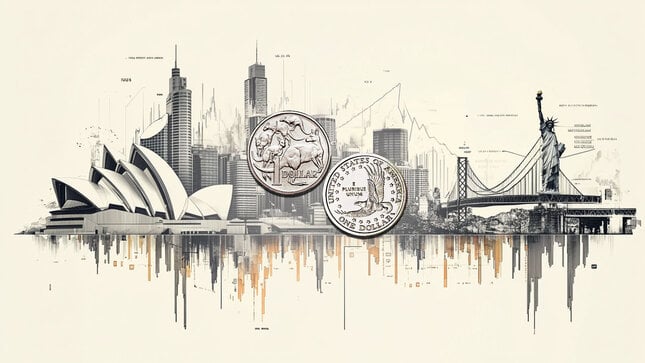Federal Reserve Bank of San Francisco President Mary Daly said on Wednesday that she "fully" supported the Fed's half of a percentage-point interest-rate cut last month. Daly further stated that one or two more rate cuts this year are likely if the economy evolves as she expects, per Reuters.
Key quotes
Fully supported half-point rate cut.
Quite confident we are on path to 2% inflation.
We are at full employment.
With policy rate steady, real rate was rising.
Rising real rate was a recipe for overtightening and injuring the labor market.
Rate cut was a recalibration, to rightsize rates for the economy.
Size of September rate cut does not say anything about pace or size of next cuts.
Two or one more cut this year is what is likely.
We will watch data, monitor labor market and inflation.
We will make more or fewer adjustments to rates as necessary.
I do not want to see further slowing in the labor market.
Most firms are seeing a hybrid work situation, not a return to a 5-day-in-the-office situation.
I am not worried about accelerating inflation.
I was more worried about injuring the labor market.
Will watch inflation data carefully.
Little evidence that balance sheet expansion has much of a direct effect on inflation.
We are coming near the inflation target but not satisfied, no victory declared.
Balance sheet is coming down to more normalised levels.
Market reaction
The US Dollar Index (DXY) is trading 0.01% lower on the day at 102.90, as of writing.
Fed FAQs
Monetary policy in the US is shaped by the Federal Reserve (Fed). The Fed has two mandates: to achieve price stability and foster full employment. Its primary tool to achieve these goals is by adjusting interest rates. When prices are rising too quickly and inflation is above the Fed’s 2% target, it raises interest rates, increasing borrowing costs throughout the economy. This results in a stronger US Dollar (USD) as it makes the US a more attractive place for international investors to park their money. When inflation falls below 2% or the Unemployment Rate is too high, the Fed may lower interest rates to encourage borrowing, which weighs on the Greenback.
The Federal Reserve (Fed) holds eight policy meetings a year, where the Federal Open Market Committee (FOMC) assesses economic conditions and makes monetary policy decisions. The FOMC is attended by twelve Fed officials – the seven members of the Board of Governors, the president of the Federal Reserve Bank of New York, and four of the remaining eleven regional Reserve Bank presidents, who serve one-year terms on a rotating basis.
In extreme situations, the Federal Reserve may resort to a policy named Quantitative Easing (QE). QE is the process by which the Fed substantially increases the flow of credit in a stuck financial system. It is a non-standard policy measure used during crises or when inflation is extremely low. It was the Fed’s weapon of choice during the Great Financial Crisis in 2008. It involves the Fed printing more Dollars and using them to buy high grade bonds from financial institutions. QE usually weakens the US Dollar.
Quantitative tightening (QT) is the reverse process of QE, whereby the Federal Reserve stops buying bonds from financial institutions and does not reinvest the principal from the bonds it holds maturing, to purchase new bonds. It is usually positive for the value of the US Dollar.
Information on these pages contains forward-looking statements that involve risks and uncertainties. Markets and instruments profiled on this page are for informational purposes only and should not in any way come across as a recommendation to buy or sell in these assets. You should do your own thorough research before making any investment decisions. FXStreet does not in any way guarantee that this information is free from mistakes, errors, or material misstatements. It also does not guarantee that this information is of a timely nature. Investing in Open Markets involves a great deal of risk, including the loss of all or a portion of your investment, as well as emotional distress. All risks, losses and costs associated with investing, including total loss of principal, are your responsibility. The views and opinions expressed in this article are those of the authors and do not necessarily reflect the official policy or position of FXStreet nor its advertisers. The author will not be held responsible for information that is found at the end of links posted on this page.
If not otherwise explicitly mentioned in the body of the article, at the time of writing, the author has no position in any stock mentioned in this article and no business relationship with any company mentioned. The author has not received compensation for writing this article, other than from FXStreet.
FXStreet and the author do not provide personalized recommendations. The author makes no representations as to the accuracy, completeness, or suitability of this information. FXStreet and the author will not be liable for any errors, omissions or any losses, injuries or damages arising from this information and its display or use. Errors and omissions excepted.
The author and FXStreet are not registered investment advisors and nothing in this article is intended to be investment advice.
Recommended content
Editors’ Picks

Gold price extends fresh record run toward $3,500
Gold price continues to build on its record rally, closing in on the $3,500 mark in Asian trading on Tuesday. Investors continue to flock to safety in the traditional store of value, the Gold price, amid no confidence in the US Dollar and Trump’s attacks on Fed Chairman Powell.

AUD/USD bounces back toward 0.6450 as US Dollar resumes downside
AUD/USD picks up fresh bids toward 0.6450 in the Asian session on Tuesday. The US Dollar fizzles its bounce and resumes downside amid uncertainty over Trump's trade policies and the weakening confidence in the US economy. Concerns about the rapidly escalating US-China trade war could act as a headwind for the Aussie.

USD/JPY mires in multi-month low near 140.00
USD/JPY languishes in seven-month lows near 140.00 in the Asian session on Tuesday. Trade war concerns, global recession fears, hopes for a US-Japan trade deal, and the divergent BoJ-Fed bets could continue to underpin the Japanese Yen while the US Dollar selling resumes.

ARK Invest integrates Canada's 3iQ Solana Staking ETF into its crypto funds
Asset manager ARK Invest announced on Monday that it added exposure for Solana staking to its ARK Next Generation Internet exchange-traded fund and ARK Fintech Innovation ETF through an investment in Canada's 3iQ Solana Staking ETF.

Five fundamentals for the week: Traders confront the trade war, important surveys, key Fed speech Premium
Will the US strike a trade deal with Japan? That would be positive progress. However, recent developments are not that positive, and there's only one certainty: headlines will dominate markets. Fresh US economic data is also of interest.

The Best brokers to trade EUR/USD
SPONSORED Discover the top brokers for trading EUR/USD in 2025. Our list features brokers with competitive spreads, fast execution, and powerful platforms. Whether you're a beginner or an expert, find the right partner to navigate the dynamic Forex market.



